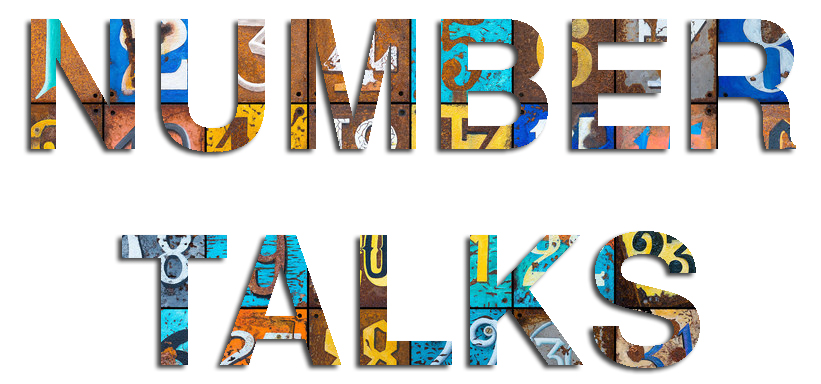At the heart of mathematics are a set of connected thinking dispositions. The mathematician uses these dispositions as the cognitive tools of their trade. While the traditional imagining of mathematics might be all about the accurate application of well-rehearsed algorithms and processes, in the real world of mathematics, it is all about the thinking. As we consider what our students need from their mathematical education, we should not overlook the importance of these dispositions.
The five components of Working Mathematically describe how content is explored or developed − that is, the thinking and doing of mathematics. (NESA, Mathematics K-10 Syllabus)
In Mathematics, the key ideas are the proficiency strands of understanding, fluency, problem-solving and reasoning. The proficiency strands describe the actions in which students can engage when learning and using the content. (ACARA, Australian Mathematics Curriculum)
The references above capture the importance of these thinking dispositions within the Australian and New South Wales Curriculum. In New South Wales students are expected to engage with mathematical content and concepts through reasoning, communicating and problem-solving. In doing this, they develop fluency as they choose procedures and think flexibly, accurately and efficiently with the content they learn. The result of this is an understanding of the content that allows them to apply what they know to unique situations and to make connections between concepts. Peter Sullivan, the curriculum writer for ACARA, describes understanding, fluency, problem-solving and reasoning as the verbs of mathematics. “This approach has been adopted to ensure students’ proficiency in mathematical skills develops throughout the curriculum and becomes increasingly sophisticated over the years of schooling”.
For teachers, the challenge is how do we ensure that our students develop these dispositions. The research of Ron Ritchhart from Project Zero and the author of Creating Cultures of Thinking is a useful starting point. Ron shares that “We can’t teach dispositions, we must enculturate them”. To support this process, he identifies eight cultural forces which shape our classrooms and that we may manipulate to create an environment that serves our purposes. Being aware of the shape of the cultural forces requires close attention to the nature of our learning environments. Armed with an understanding of the forces which are shaping the culture of our classrooms allows us to notice how they are currently enacted. From that point, we begin to make adjustments to achieve the desired effect. In this sense, the cultural forces can be both a lens with which to see and lever with which to shift our practice. For more on understanding the Cultural Forces as a Lens & a Lever - Read this. And then read Creating a Culture of Thinking for the full picture.
Image courtesy Ron Ritchhart
The following questions are offered as a starting point for the teacher of mathematics looking to audit how the cultural forces are impacting learning in their classroom. Good questions should allow you to see things from a new perspective. Great questions should lead you to more questions. Hopefully, this list does both.
Opportunities
What opportunities are you currently creating for problem-solving?
When are students required to explain their reasoning? How might you add other opportunities for this?
What opportunities do students have to communicate their thinking? To whom and how?
What opportunities are there for students to select strategies? Are they required to evaluate and justify their choice?
How many ways are there to solve the problems students engage with? Can you alter the problem to make it open-ended?
Do the problems your students solve have one answer or many?
Time
What time is currently allocated for problem-solving, reasoning, communicating?
When is time allocated for problem-solving, reasoning, communicating? Do students begin their learning journey with a problem, or is his the bonus question at the end?
What changes if you alter the order of a unit? How might things change if you begin with a problem?
Modelling
What modelling of mathematical thinking do students benefit from? Do students see you having to think? Do they see what mathematicians do when they are stuck?
How might modelling of mathematical thinking be increased?
How might we use modelling of mathematical thinking to enhance learning?
Language
What language do you currently use when teaching mathematical thinking?
Are answers right or wrong? What might change if answers were interesting, surprising, challenging, beautiful?
Do we praise answers or the struggle of the progress? Does our language choice suggest that struggle is a bad thing? How might we change that?
How might language be used to scaffold, name and notice mathematical thinking?
Are our students labelled as mathematicians? How might this change their mindset?
Environment
How does the environment of our classroom promote mathematical thinking?
Do we show works in progress or solutions? Do we celebrate answers more than questions?
Do our displays emphasise rote memorisation of facts or encourage flexible thinking?
How might the environment of our classroom promote mathematical thinking?
Expectations & Interactions
What expectations do we have for mathematical thinking in our classrooms?
How are these expectations communicated and lived?
What do our interactions with students communicate about our expectations? How might we change that?
What expectations for mathematical thinking might we wish for?
Do we believe all students can be mathematicians? How do we communicate this belief?
What would change if all of our students believed they could be mathematicians?
Do our interactions encourage persistence or do we rescue our students?
Routines
What routines are currently used to support mathematical thinking?
What routines might we use to support mathematical thinking?
How might we make mathematical thinking routine?
What does our student’s mathematical thinking look like?
How might we use visible thinking routines to make their thinking visible? What will we do with the information we gain from this?
Might our students select and use visible thinking routines to enhance their mathematical thinking?
By Nigel Coutts















